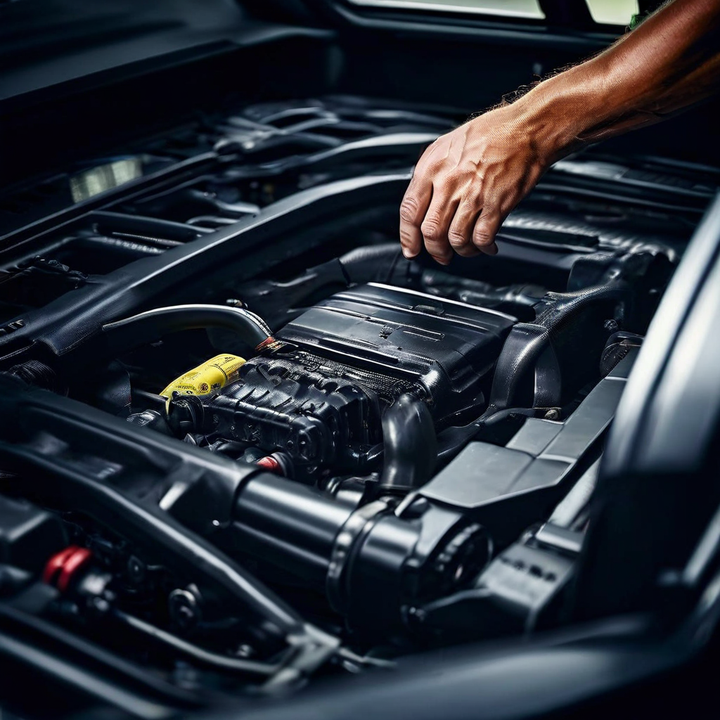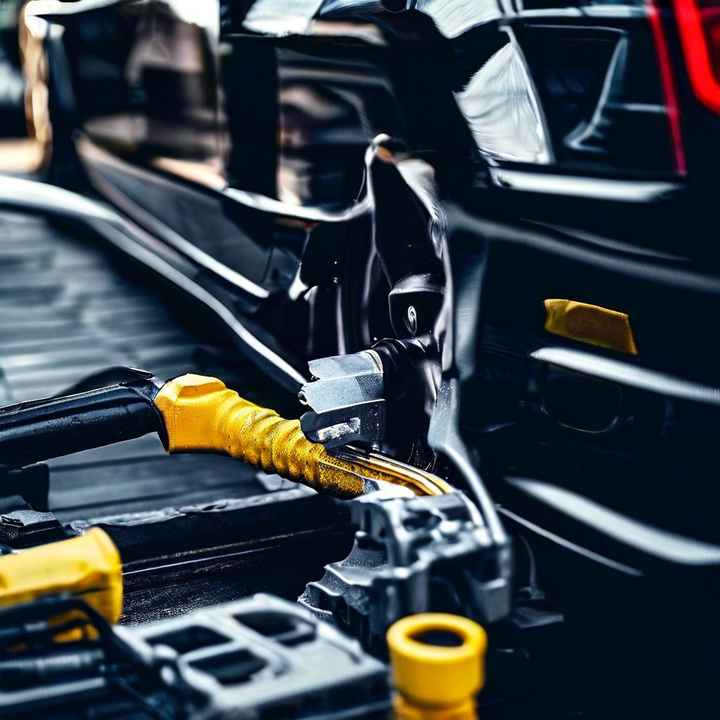


Certain Audi models equipped with the 2.0L TFSI (Turbocharged Fuel Stratified Injection) engines have been plagued by excessive oil consumption issues. This problem has affected a significant number of vehicles, leading to frustration among owners and prompting legal action against the automaker.

Before we dive into the solutions, it's crucial to understand the root causes of excessive oil consumption in Audi engines. These causes can be categorized as follows:
| Cause | Description |
|---|---|
| Worn Piston Rings | Over time, the piston rings responsible for sealing the combustion chamber can become worn or stuck. When this happens, oil can seep past the rings and enter the combustion chamber, where it burns off, leading to increased oil consumption. |
| Clogged Oil Control Rings | Audi engines have small oil control rings designed to regulate the flow of oil and prevent excessive consumption. However, carbon buildup can clog these rings, hindering their ability to function properly and causing oil to burn. |
| Faulty PCV (Positive Crankcase Ventilation) Valve | The PCV valve is a crucial component that regulates the pressure in the crankcase. If it fails, excessive pressure can push oil into the combustion chambers, leading to increased oil consumption. |
Before attempting any repairs, it's crucial to diagnose the root cause of the oil consumption problem accurately. Here's how I approach the diagnosis process:
I typically start by performing an oil consumption test. This involves measuring the amount of oil used over a specific mileage, usually between 600 and 1,000 miles. Excessive oil consumption is generally considered if the engine burns more than one quart of oil within that mileage range.
Check for signs of oil burning, such as blue or gray smoke from the exhaust.
Inspect the oil fill cap – if it's difficult to remove, it may indicate a stuck PCV valve.
Reviewing the vehicle's maintenance records can provide valuable insights. If the owner has been frequently topping up the oil between service intervals, it's a strong indicator of an oil consumption issue.
Once the root cause has been identified, it's time to address the problem. Here are some common repair procedures:
If the issue is related to clogged piston rings, I often recommend an engine flush using a product like BG EPR. This can help clean the rings and potentially restore their sealing ability, avoiding the need for a more extensive engine rebuild.
The process typically involves:
Removing the spark plugs and injecting the cleaning solution directly into the cylinders.
Running the engine for a specific duration to allow the solution to circulate and clean the rings.
Draining the old oil and replacing it with fresh, high-quality synthetic oil.
If the PCV valve is faulty, replacing it is a relatively straightforward and cost-effective solution. This can help restore proper crankcase ventilation and prevent excessive oil consumption.
The replacement process involves:
Locating and removing the old PCV valve, which is typically connected to the valve cover or intake manifold.
Installing the new PCV valve and ensuring proper sealing and connections.
Resetting any related diagnostic codes or warning lights.
In severe cases, where the piston rings or other components are significantly worn, a full engine teardown and rebuild may be necessary. This involves:
Disassembling the engine and inspecting all components for wear or damage.
Replacing the pistons, rings, bearings, and any other damaged components.
Reassembling the engine with new gaskets, seals, and other necessary parts.
Performing any required adjustments and calibrations.
While addressing the immediate issue is crucial, it's equally important to take preventive measures to avoid future oil consumption problems. Here are some tips I recommend to my clients:
| Preventive Measure | Description |
|---|---|
| Follow Recommended Service Intervals | Adhering to the recommended service intervals for oil changes and using high-quality synthetic oils can go a long way in preventing excessive oil consumption. Neglecting regular maintenance can lead to sludge buildup and accelerated wear on engine components. |
| Use Oil Additives | Periodically using oil additives like Liqui Moly or other piston cleaning products can help keep the piston rings and oil control rings clean and functioning properly. |
| Avoid Extended Oil Change Intervals | While some manufacturers recommend extended oil change intervals, I generally advise against it, especially for turbocharged Audi engines. Frequent oil changes can help prevent sludge buildup and prolong the life of critical engine components. |
| Gentle Driving After Oil Changes | After an oil change, it's a good practice to drive gently for the first few miles. This allows the new oil to circulate properly and reach all the necessary components, reducing the risk of excessive oil consumption. |
Addressing oil consumption issues can be costly, depending on the severity of the problem and the repair required. Here's a general breakdown of the costs you can expect:

PCV Valve Replacement: Typically ranges from $150 to $300 for parts and labor.
Engine Flush Service (e.g., BG EPR): Can cost between $100 and $300, depending on the service provider.
Full Engine Rebuild with New Pistons and Rings: This is the most expensive option, often ranging from $3,000 to $6,000 or more, depending on the specific Audi model and labor rates in your area.
While these costs may seem significant, it's important to address oil consumption issues promptly. Neglecting the problem can lead to further engine damage and potentially catastrophic failure, which can be even more expensive to repair.
Excessive oil consumption in Audi vehicles is a common issue that can be frustrating for owners. However, with the right knowledge and approach, it's often fixable. As a mechanic, I've seen firsthand the importance of proper diagnosis, timely repairs, and preventive maintenance in addressing this problem.
By following the recommended service intervals, using high-quality oils and additives, and addressing issues promptly, you can help extend the life of your Audi engine and avoid costly repairs down the line. Remember, regular maintenance and attention to oil consumption are key to keeping your Audi running smoothly for years to come.
The most common cause is worn piston rings that allow oil to seep past and enter the combustion chamber where it burns off.
Perform an oil consumption test by measuring oil used over a specific mileage, and visually inspect for signs of oil burning like blue exhaust smoke.
The PCV valve regulates pressure in the crankcase, preventing excessive pressure that can push oil into the combustion chambers.
An engine flush uses a cleaning solution to clean the piston rings, potentially restoring their sealing ability and reducing oil consumption.
A full rebuild involving disassembly and replacement of pistons, rings, and other worn components is necessary in severe cases of excessive wear.
Follow recommended service intervals, use high-quality synthetic oils and additives, avoid extended oil change intervals, and drive gently after oil changes.
Replacing the PCV valve typically costs between $150 to $300 for parts and labor.
An engine flush service can cost between $100 to $300, depending on the service provider.
A full engine rebuild can range from $3,000 to $6,000 or more, depending on the specific Audi model and labor rates.
Neglecting oil consumption can lead to further engine damage and potentially catastrophic failure, which can be even more expensive to repair.

Sarah isn't your average gearhead. With a double major in Mechanical Engineering and Automotive Technology, she dived straight into the world of car repair. After 15 years of turning wrenches at dealerships and independent shops, Sarah joined MICDOT to share her expertise and passion for making cars run like new. Her in-depth knowledge and knack for explaining complex issues in simple terms make her a valuable asset to our team.













